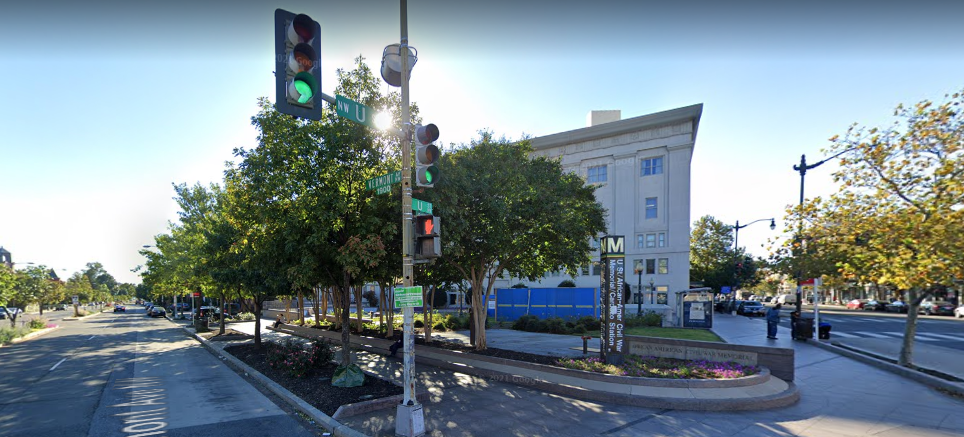THE LEAFLET

The Trees of Places Linked to Black History Around Town
Black History Month, celebrated every February in the States, is a time to remember and honor the many groups and individuals who contributed to the success and achievements of this country as well as to advancement for African Americans as a people.
In a city with a history as rich as DC, there is no shortage of ways to celebrate and honor Black History Month and the hard-fought-for accomplishments of African Americans. This week, take a look through our existing resources and stay tuned for more exclusive content celebrating Black Americans in DC, forestry, and beyond.
Celebrating Black history and celebrating DC history go in tandem – from serving as one of the first havens for freed enslaved people to earn the moniker ‘Chocolate City’ to the ripple effects of gentrification we’re living through today, DC history is Black history and Black history is DC’s history.
Black History Month was born in DC by our very own Dr. Carter G. Woodson, who started Negro History Week in 1926. Before Dr. Carter G. Woodson, there was minimal accurate written history about the lives and experiences of Americans of African descent. He spent most of his life gathering an accurate written history of the African experience in America. Today, the Dr. Carter G. Woodson Home National Historic Site nestled in between Shaw and Logan Circle serves as a testament to his efforts to inform the public on the role of African Americans in history. Matching the stately demeanor of this historical home are a Red Oak (left) and a Willow Oak (right) welcoming visitors to the Historic Site. (The article image is from the Carter G. Woodson park, up the block from the National Historic Site, which features many stately trees).
Another Shaw landmark to Black history is the African American Civil War Memorial, which is so much more than the name of a Metro stop. Although the Civil War is commemorated with scores of monuments and historic battlefields, the African American Civil War Memorial shines a light on a somewhat neglected chapter of that bloody conflict: The contributions of the regiments then called “United States Colored Troops,” who made up a significant chunk of Union forces by the end of the war. The memorial along U Street NW consists of a granite plaza highlighted by statuary and a wall of honored names provides a fitting tribute to the nearly 210,000 African Americans who served for a country that did not recognize their personhood. Speaking of granite plazas, Metro stations and the hustle and bustle of U Street, Pin Oak and Red Oak dot the block with the Memorial, providing shade to passersby, while a canopy of crape myrtles alongside the memorial provides visual interest and a green screen to block out the hustle and bustle of the city.
Across town in the Capitol Hill institution Lincoln Park, you may have noticed a monument to educator and activist Mary McLeod Bethune. Known as “The First Lady of The Struggle” because of her commitment to gain better lives for African Americans, she was appointed as a national adviser to President Franklin D. Roosevelt and was a noted educator, founding a private school for African American students that is now Bethune-Cookman University. The first monument to honor a black woman in a public park in the District of Columbia, the inscription on the monument “let her works praise her” speaks of her many accomplishments.
We could go on and on about the trees in Lincoln Park that provide a backdrop for Mary McLeod Bethune’s statue – and we have! Our Park Storymap shares the history of Lincoln Park as the site of numerous civil rights rallies throughout the 1960s. Thanks to its flourishing open greenspace full of mature canopy trees, it’s a destination for its memorial significance and often, as simply a respite amidst the hustle and bustle of Capitol Hill.
After escaping slavery in Maryland, Frederick Douglass was committed to freedom and he dedicated his life to achieving justice for all Americans, and in particular African-Americans, women, and minority groups. A talented writer, powerful speaker, and passionate abolitionist he envisioned America as an inclusive nation strengthened by diversity and free of discrimination. Douglass’s legacy is preserved at Cedar Hill, Known to us as the Frederick Douglass National Historic Site in historic Anacostia, where he lived his last 17 years. Later this month we’re sharing more about our work re-treeing this site! Until we share about the Heritage Trees on-site, we’ll showcase the establishing street tree around the block! Lining the property are a diverse row of trees including Red Maples, Tupelo, Yoshino Cherries, Buckeyes, and more.
A perennial favorite is the Martin Luther King, Jr. Memorial, where 2015 Canopy Award Honoree Oehme van Sweden created a landscape memorial that honored Dr. King. Their design was sensitive to its placement near the Tidal Basin’s beloved Yoshino cherry trees and focused on providing adequate canopy coverage to shade pedestrians while they learn more about MLK’s legacy and work. Check out our deep dive into the trees surrounding the Memorial and our work with the National Park Service to re-tree the surrounding area.
These historical spots host incredible evidence of the achievements, struggles, and lives of African Americans during the history of the continent. The monuments also testify to the role of our National Park Service and other land agencies in preserving important pieces of our nation’s story and cultural heritage.




